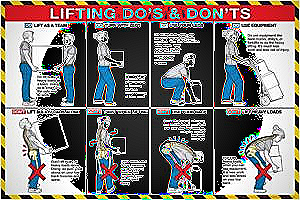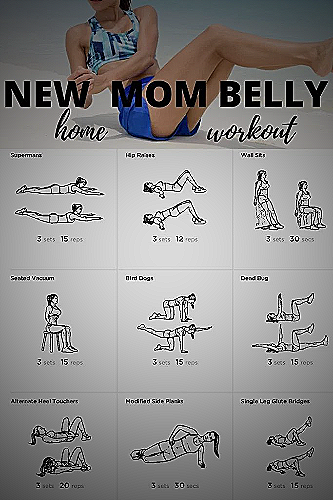Diastasis recti is usually associated with pregnant women, but can men get it too? The answer is yes.
In this article, we will discuss the causes of dia stasis recti in men and provide tips on how to prevent and treat it.
Causes of Dia stasis Recti in Men
Diastasis recti in men develops gradually over time and is often misdiagnosed as a beer belly or weight gain. While it’s usually caused by pregnancy in women, researchers have identified four causes of the condition in male patients:
- Age: As men age, their connective tissues become weaker and less elastic, making them more prone to developing dia stasis recti.
- Obesity: Obesity puts added pressure on the abdominal muscles, causing them to weaken and separate.
- Heavy lifting: Repeated heavy lifting with poor technique can strain the abdominal muscles and cause them to separate over time.
- Abdominal surgery: Previous surgery on the abdomen can weaken the muscles and lead to dia stasis recti in men.
Prevention and Treatment
Prevention is the best way to avoid dia stasis recti in men. Maintaining a healthy weight, practicing proper lifting techniques, and exercising regularly can all help prevent the condition from developing.
If you have already been diagnosed with dia stasis recti, there are several treatment options available, including:
- Physical therapy: A physical therapist can help you strengthen your abdominal muscles and improve their overall function through targeted exercises.
- Surgery: In severe cases, surgery may be needed to repair the muscle separation.
- Abdominal binders: Wearing an abdominal binder can help support the muscles and reduce discomfort.

Check out this Youtube video to learn more about why men may experience diastasis recti and how to prevent it: “Why Men Get Diastasis Recti – YouTube.”
What is Diastasis Recti?
Diastasis recti is a medical condition that occurs when the rectus abdominis muscles, commonly known as the six-pack muscles, separate. This separation causes a noticeable bulge or pooch in the abdominal area.
Diastasis recti can happen to anyone, including men and women, and is often caused by weight gain, pregnancy, or damage to the abdominal muscles due to injury or surgery.
Can men get Diastasis Recti?
Yes, men can get diastasis recti. While it’s more commonly associated with women who have recently given birth, diastasis recti in men can develop gradually over time.
This is often due to weak abdominal muscles, weight gain, or improper exercise techniques that put too much strain on the midsection. In fact, researchers have identified four main causes of diastasis recti in male patients: obesity, chronic cough, improper weightlifting, and abdominal surgery.
What are the symptoms of Diastasis Recti in men?
The most noticeable symptom of diastasis recti in men is the visible bulge or pooch in the abdominal area. In addition to this, men may also experience back pain, poor posture, and digestive issues.
The separation of the abdominal muscles can also cause weakness and instability in the midsection, making it difficult to perform certain activities or exercises.
How can Diastasis Recti in men be treated?
Treatment options for diastasis recti in men vary depending on the severity of the condition. In mild cases, targeted exercises that focus on strengthening the abdominal muscles can help improve muscle tone and reduce the visible bulge.
In more severe cases, surgery may be necessary to repair the damaged muscles and improve overall abdominal strength and stability. It’s important to speak with a healthcare provider or fitness professional for personalized treatment recommendations.
If you suspect you have diastasis recti, speak to a doctor or healthcare provider for proper diagnosis and treatment.
Causes of Diastasis Recti in Men
Cause 1: Intense Weightlifting
Intense weightlifting can cause diastasis recti in men by putting immense pressure on the abdominal muscles. The excessive strain weakens the connective tissues and can create a separation in the mid-line.
This is particularly evident in men who do weightlifting for long periods or lift heavy weights frequently.
Examples of workouts that use excessive weight and can put pressure on the abdominal muscles include deadlift, squats, overhead press, and weighted pull-ups. To prevent diastasis recti due to intense weightlifting, men should ensure they lift weights that are proportionate to their strength and maintain proper form while doing exercises.
Cause 2: Poor Posture
Poor posture is another significant cause of diastasis recti in men. Men who slouch or sit for extended periods create a significant strain on their abdominal muscles and weaken the connective tissues.
Over time, this leads to a separation of the rectus abdominis muscles in the mid-line of the stomach.
To correct bad posture and prevent diastasis recti, men should always sit and stand tall while keeping their abdominal muscles engaged. Maintaining good posture during exercise and daily activities will help to strengthen the core muscles and prevent the excessive pressure that leads to diastasis recti.
Cause 3: Abdominal Surgery
Abdominal surgery is another cause of diastasis recti in men. Surgical procedures that involve the abdominal muscles, such as hernia surgery, can weaken and separate the muscles in the mid-line, leading to diastasis recti.
To prevent diastasis recti due to abdominal surgery, men should engage in physical therapy exercises to help strengthen the abdominal muscles slowly. It’s important to take it easy following surgery and to avoid overloading the abdominal muscles with physical activity.
Cause 4: Obesity and Weight Gain
Obesity and significant weight gain can also contribute to diastasis recti in men. People with excess abdominal fat can place a lot of stress on the muscles in the mid-line, leading to a weakening of the connective tissues and separation of the muscles.
Managing healthy weight levels and engaging in regular physical activity can help prevent diastasis recti due to obesity and weight gain. Maintaining good posture and doing exercises that strengthen the abdominal muscles can also be beneficial.
How to Prevent and Treat Diastasis Recti in Men
Preventive Measures
Yes, men can get diastasis recti. But there are ways to prevent this condition.
Firstly, maintaining a healthy weight can help prevent diastasis recti. Men who lift weights or do core exercises frequently are advised to practice proper form to avoid putting pressure on their abdomen area.
Also, engaging in exercises that support the pelvic floor muscles, such as Kegels, can help prevent diastasis recti from developing.
Exercises to Help Prevent and Treat Diastasis Recti
For men dealing with diastasis recti, certain exercises can help treat and prevent this condition. Here are specific exercises that can help:
| 1. | Blowing Out Candles: | This exercise involves lying on your back with your feet flat on the ground and knees bent. Then, suck in your stomach and exhale slowly while imagining that you are blowing out a candle. |
| 2. | Tummy Tucks: | This exercise involves lying on your back, then slowly lifting your head and should blades off the ground while keeping your arms extended straight. You can also raise your legs off the floor to intensify the exercise. |
| 3. | Heel Slides: | This exercise involves lying on your back, with your knees bent and feet flat on the ground. Slowly slide one heel along the floor until your leg is straight, then slide it back to the starting position. Repeat with the other leg. |
| 4. | Plank: | Planks build core strength without putting pressure on your mid-abdomen. Begin by getting into a push-up position, then lower your forearms to the ground. Hold this position for as long as possible while maintaining proper alignment. |
| 5. | Single-Leg Lifts: | This exercise involves lying on your back, with your knees bent and feet flat on the ground. Slowly lift one leg off the ground, keeping it as straight as possible. Lower it back down and repeat with the other leg. |
| 6. | Marches: | This exercise involves lying on your back, with your knees bent and feet flat on the ground. Slowly lift one foot off the ground, then lower it back down. Repeat with the other foot. |
| 7. | Reverse Crunches: | This exercise involves lying on your back, then lift your knees to your chest while keeping your arms straight. Then, slowly lower your legs back to the starting position. |
Other Treatment Options
If exercises alone are not enough to treat diastasis recti in men, other treatment options may be necessary. These include wearing a support belt or brace, using pelvic floor physical therapy, and in severe cases, surgery.
Conclusion
Men can get dia stasis recti, which is a condition that occurs when the muscles in the mid-abdomen weaken and separate, causing a noticeable pooch in the stomach. While pregnancy is the most common cause in women, men can develop this condition due to heavy lifting, sudden weight gain, connective tissue disorders, or excessive muscle or fat.
Fortunately, there are exercises that can help cure dia stasis recti in men, including blowing out candles, tummy tucks, heel slides, planks, single-leg lifts, marches, and reverse crunches. By regularly engaging in core strength training and postural exercises, men can strengthen their abdominal wall and improve their overall health and fitness.

References
- Can Men Get Dia stasis Recti?
- Diastasis Recti: Frequently Asked Questions
- Diastasis Recti in Men: Causes, Symptoms, Treatment, and More
- Diastasis recti: Everything you need to know
- A guide to dia stasis recti
